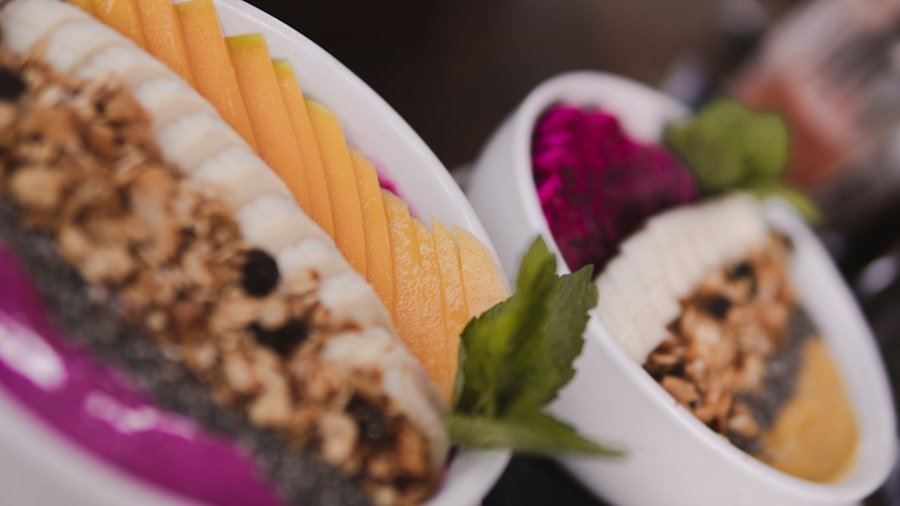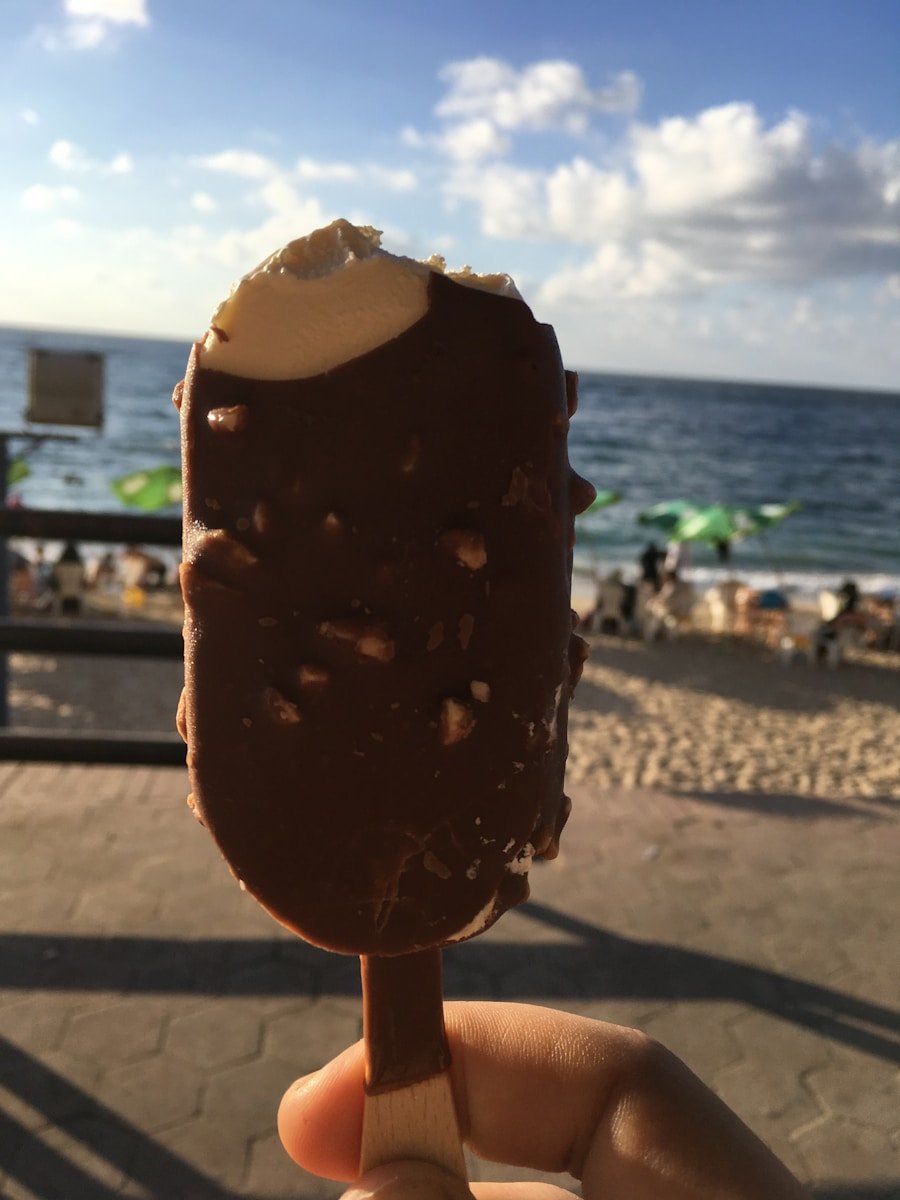The culinary world is constantly evolving, with chefs and home cooks alike seeking inspiration from diverse sources. One of the most intriguing trends in contemporary gastronomy is the emergence of oceanfront desserts, which draw upon the rich bounty of the sea and the coastal regions. These desserts not only celebrate the flavors and textures found in marine environments but also reflect a growing awareness of sustainability and health.
By incorporating ingredients sourced from the ocean, these sweet creations offer a unique twist on traditional desserts, inviting diners to experience the essence of coastal living in every bite. Oceanfront desserts can range from the simple to the elaborate, showcasing a variety of flavors that evoke the sea’s salty breeze and sun-kissed shores. The use of ocean-inspired ingredients such as sea salt, seaweed, and even seafood can elevate a dessert from ordinary to extraordinary.
This innovative approach not only tantalizes the taste buds but also encourages a deeper appreciation for the ocean’s ecosystems and the importance of sustainable practices in food sourcing. As we delve into the world of oceanfront desserts, we will explore the health benefits of these ingredients, creative ways to incorporate seafood, and the exotic fruits and berries that thrive in coastal regions. Weight Loss Haven is a great resource for finding tips and advice on achieving your weight loss goals, visit https://weightlosshaven.com for more information.
Key Takeaways
- Oceanfront desserts offer a unique and refreshing twist to traditional sweet treats, incorporating ingredients inspired by the sea and coastal regions.
- Seafood and ocean-inspired ingredients like seaweed, algae, and exotic fruits and berries not only add a delicious flavor to desserts but also provide various health benefits.
- There are creative ways to incorporate seafood into desserts, such as using fish roe as a topping or infusing desserts with the delicate flavor of shellfish.
- Coastal regions are home to a variety of exotic fruits and berries that can add a tropical and refreshing element to desserts, such as mango, passion fruit, and guava.
- Seaweed and algae are nutrient-rich ingredients that can be used in dessert recipes to add a unique flavor and boost the nutritional value of the treats.
The Health Benefits of Ocean-Inspired Ingredients
Incorporating ocean-inspired ingredients into desserts can offer numerous health benefits, making them not only delicious but also nutritious.
When used in desserts, seafood can provide a unique source of protein while also delivering essential nutrients that are often lacking in traditional sweet treats.
This innovative approach to dessert-making encourages a more balanced diet, allowing individuals to indulge their sweet tooth without compromising their health. Moreover, ingredients like seaweed and algae are packed with vitamins and minerals that can enhance overall well-being. Seaweed is a powerhouse of nutrients, containing iodine, calcium, iron, and various antioxidants.
These elements contribute to improved thyroid function, better digestion, and enhanced immune response. By incorporating seaweed into desserts—such as using spirulina powder in smoothies or kelp flakes in cookies—chefs can create treats that not only satisfy cravings but also support a healthy lifestyle. The growing trend of using ocean-inspired ingredients reflects a broader movement towards mindful eating, where flavor and nutrition go hand in hand.
Creative Ways to Incorporate Seafood into Desserts

While the idea of using seafood in desserts may initially seem unconventional, there are numerous creative ways to incorporate these ingredients into sweet dishes. One popular method is to use fish or shellfish in savory-sweet combinations that highlight their natural flavors. For example, a lobster-infused crème brûlée can provide an unexpected yet delightful contrast between the rich creaminess of the custard and the subtle sweetness of the lobster meat.
This dish not only showcases the luxurious nature of seafood but also challenges traditional dessert norms. Another innovative approach is to use seafood-derived products such as fish sauce or miso in dessert recipes. These ingredients can add depth and umami to sweet dishes, creating a complex flavor profile that surprises and delights diners.
A miso caramel sauce drizzled over vanilla ice cream or a fish sauce-infused chocolate ganache can elevate classic desserts to new heights. By experimenting with these unconventional pairings, chefs can create memorable experiences that celebrate the ocean’s bounty while pushing the boundaries of dessert-making.
Exotic Fruits and Berries from Coastal Regions
| Fruit/Berry | Coastal Region | Availability | Nutritional Value |
|---|---|---|---|
| Mangosteen | Southeast Asia | Year-round | High in antioxidants and vitamin C |
| Dragonfruit | Central America | Summer months | Rich in fiber and vitamin C |
| Passionfruit | South America | Year-round | Good source of fiber and vitamin A |
| Acai Berry | Amazon Rainforest | Year-round | High in antioxidants and healthy fats |
Coastal regions around the world are home to a plethora of exotic fruits and berries that can enhance oceanfront desserts with their vibrant flavors and unique textures. For instance, the tropical mangosteen, often referred to as the “queen of fruits,” boasts a sweet and tangy flavor that pairs beautifully with coconut-based desserts. A mangosteen sorbet served alongside a coconut panna cotta can transport diners to sun-drenched beaches while providing a refreshing palate cleanser.
Similarly, coastal areas are known for their abundance of berries such as sea buckthorn and huckleberries. Sea buckthorn berries are rich in vitamin C and antioxidants, making them an excellent addition to desserts like tarts or compotes. Their tartness can balance out sweeter elements, creating a harmonious flavor profile.
Huckleberries, on the other hand, have a sweet yet slightly tart flavor that works well in pies or as a topping for cheesecakes. By incorporating these exotic fruits into dessert recipes, chefs can celebrate the diverse flavors found along coastlines while offering diners a taste of adventure.
Nutrient-Rich Seaweed and Algae in Dessert Recipes
Seaweed and algae are often overlooked in dessert-making, yet they offer a wealth of nutritional benefits and unique flavors that can enhance sweet dishes. For instance, agar-agar, derived from red algae, is a popular vegetarian alternative to gelatin that can be used to create jellies, puddings, and mousses. Its ability to set liquids without altering their flavor makes it an ideal ingredient for crafting delicate desserts that showcase other ocean-inspired elements.
In addition to agar-agar, other types of seaweed such as dulse or nori can be incorporated into sweet recipes for added texture and flavor. Dulse flakes can be sprinkled over chocolate truffles or incorporated into cookie dough for a subtle umami kick that complements the sweetness of chocolate. Nori sheets can be used creatively to wrap around fruit-based desserts or even blended into batters for cakes or brownies, imparting a unique taste reminiscent of the sea.
By embracing these nutrient-rich ingredients, chefs can create innovative desserts that not only taste good but also contribute positively to health.
Indulgent and Decadent Chocolate Treats with a Coastal Twist

Chocolate is a beloved ingredient in desserts worldwide, and when combined with oceanfront elements, it can take on new dimensions of flavor and indulgence. One popular trend is to pair chocolate with sea salt, which enhances its richness while providing a delightful contrast. A dark chocolate sea salt caramel tart exemplifies this combination beautifully; the bitterness of dark chocolate harmonizes with the sweetness of caramel and is elevated by the crunch of flaky sea salt.
Another decadent option is to incorporate seafood flavors into chocolate treats. For example, chocolate-covered shrimp may sound unusual at first but can create an exquisite balance between sweet and savory when prepared correctly. The natural sweetness of shrimp complements dark chocolate’s bitterness, resulting in an unexpected yet delightful treat.
Additionally, using chocolate-infused with seaweed extracts or flavored with hints of miso can create complex flavor profiles that intrigue adventurous palates. These indulgent chocolate treats not only satisfy cravings but also invite diners to explore new culinary horizons.
Refreshing and Light Citrus Desserts with a Beachy Flair
Citrus fruits are synonymous with coastal living, evoking images of sun-soaked beaches and refreshing ocean breezes. Their bright flavors make them ideal for creating light and refreshing desserts that capture the essence of summer. Lemon meringue pie is a classic example; its tart lemon filling paired with fluffy meringue creates a delightful contrast that is both satisfying and invigorating.
In addition to traditional citrus desserts, innovative chefs are exploring new ways to incorporate citrus into sweet dishes. For instance, a grapefruit sorbet infused with fresh mint can serve as a palate cleanser between courses or as a standalone dessert on hot summer days. Similarly, key lime cheesecake offers a creamy texture balanced by the tanginess of key limes, making it an ideal choice for those seeking something light yet indulgent.
Tips for Finding and Using Sustainable Oceanfront Ingredients
As interest in oceanfront desserts grows, so does the importance of sourcing sustainable ingredients responsibly. When seeking out seafood or ocean-derived products for dessert-making, it is crucial to prioritize sustainability to protect marine ecosystems. One effective way to ensure sustainability is by looking for certifications such as those provided by organizations like the Marine Stewardship Council (MSC) or the Aquaculture Stewardship Council (ASC).
These certifications indicate that seafood has been sourced from well-managed fisheries or farms that prioritize environmental health. Additionally, local farmers’ markets often feature vendors who specialize in sustainable seafood or ocean-inspired ingredients like seaweed or coastal fruits. Engaging with these vendors not only supports local economies but also fosters relationships that can lead to more sustainable sourcing practices over time.
When using these ingredients in dessert recipes, it’s essential to experiment with different combinations while being mindful of their unique flavors and textures. By embracing sustainable practices in sourcing oceanfront ingredients, chefs can create delicious desserts that honor both culinary creativity and environmental responsibility.
If you’re looking for healthy dessert options to complement your oceanfront feast, you may want to consider the advice of the World Health Organization, which advises against using sugar substitutes for weight loss. According to a recent article on CNN, the WHO cautions that sugar substitutes may not be as effective for weight loss as previously thought. To read more about their findings, check out the article here.
FAQs
What are some healthy dessert options for an oceanfront feast?
Some healthy dessert options for an oceanfront feast include fruit skewers, yogurt parfaits, chia seed pudding, and grilled fruit.
How can I make a fruit skewer for a healthy dessert?
To make a fruit skewer, simply thread a variety of fresh fruits such as strawberries, pineapple, grapes, and melon onto a skewer. Serve with a side of Greek yogurt or a drizzle of honey for added sweetness.
What is a yogurt parfait and how can I make it?
A yogurt parfait is a layered dessert made with yogurt, granola, and fresh fruit. To make a yogurt parfait, simply layer Greek yogurt, granola, and your choice of fresh berries or sliced fruit in a glass or bowl.
What is chia seed pudding and how can I make it?
Chia seed pudding is a healthy dessert made by soaking chia seeds in a liquid such as almond milk or coconut milk. To make chia seed pudding, mix chia seeds with your choice of liquid and let it sit in the refrigerator for a few hours or overnight until it thickens.
How can I grill fruit for a healthy dessert?
To grill fruit for a healthy dessert, simply slice fruits such as peaches, pineapple, or watermelon and grill them over medium heat for a few minutes on each side until they are caramelized and slightly charred. Serve with a dollop of Greek yogurt or a sprinkle of cinnamon for added flavor.